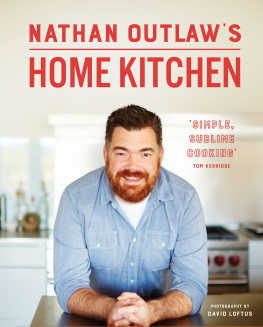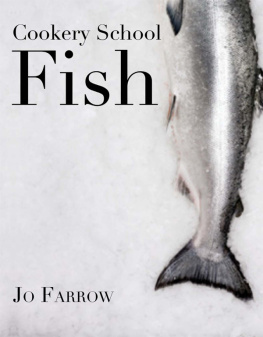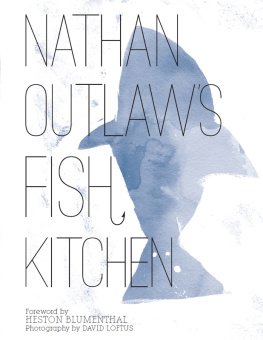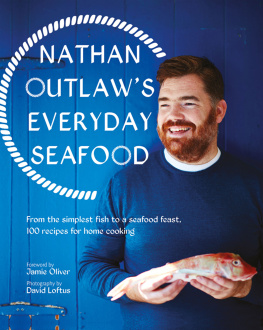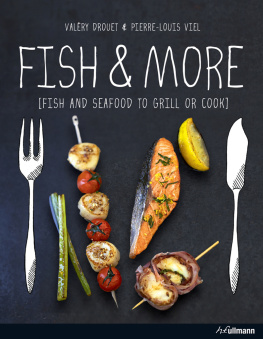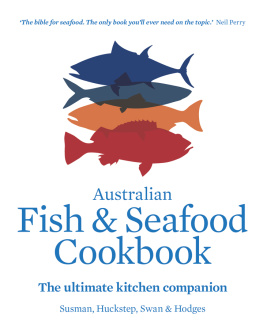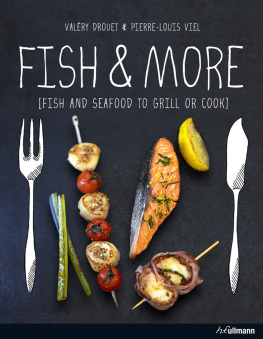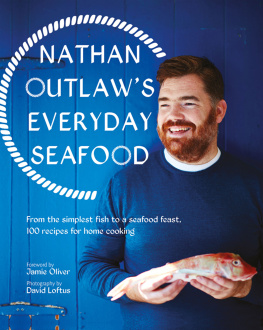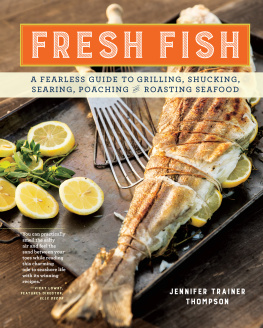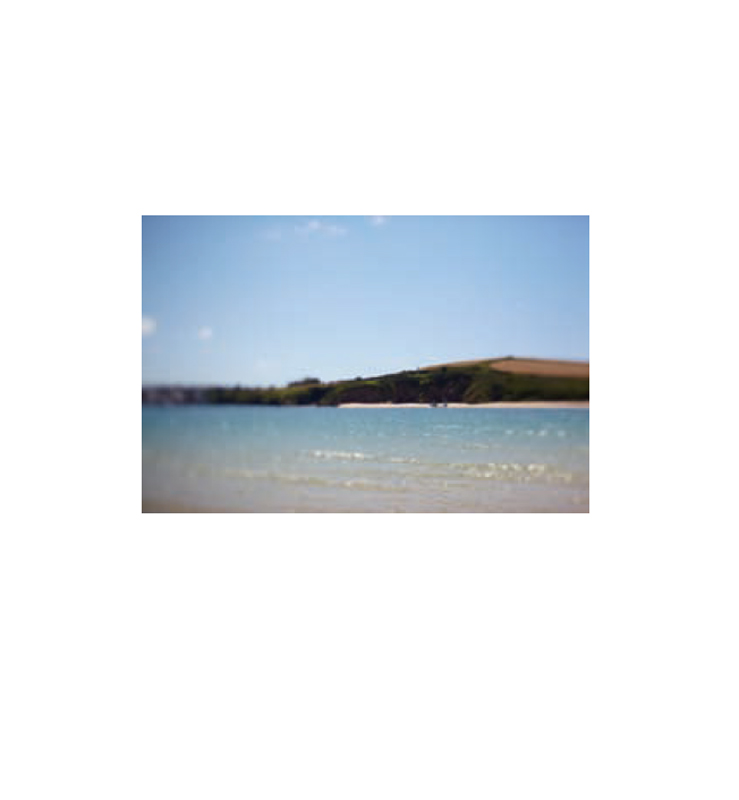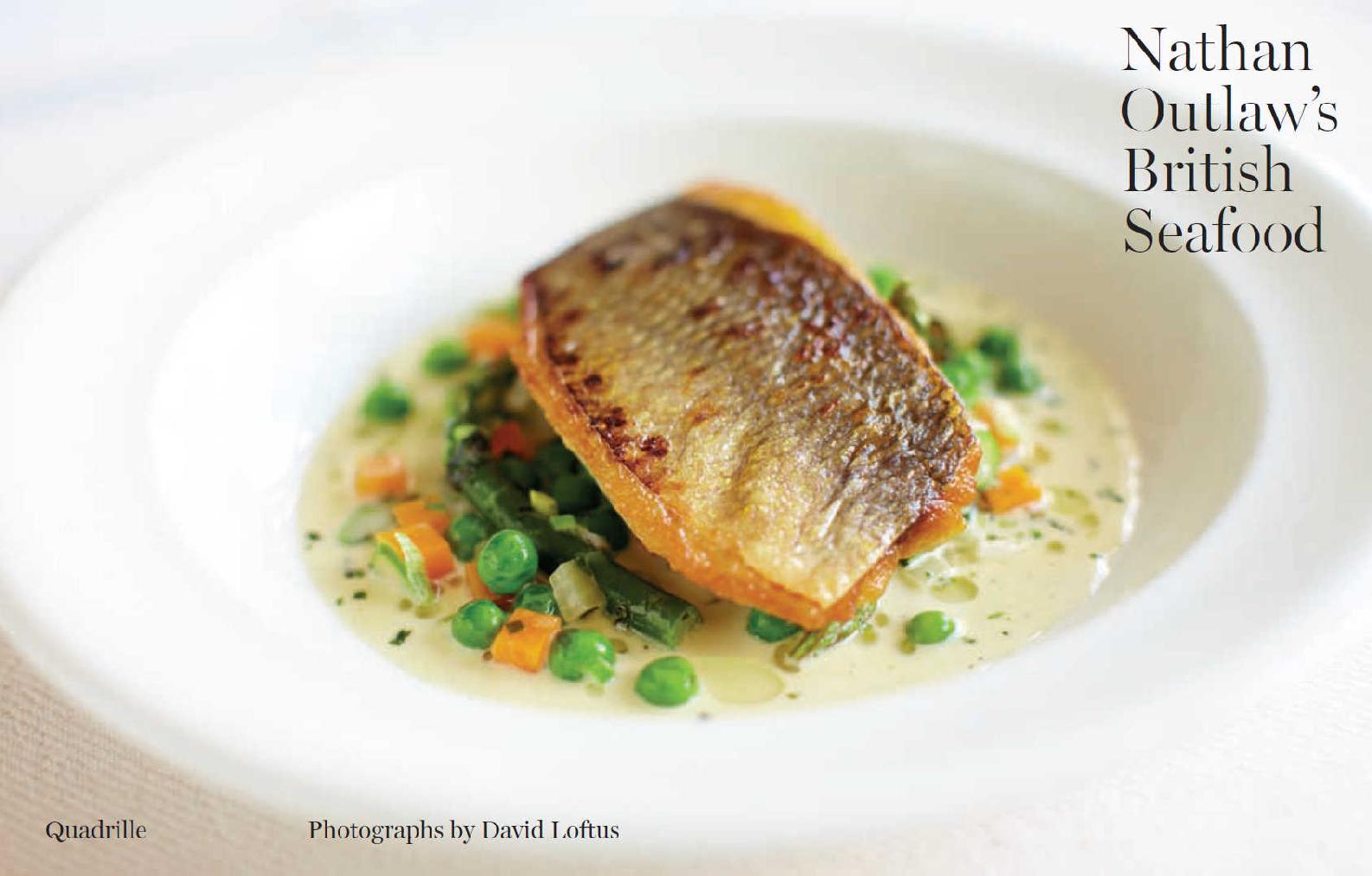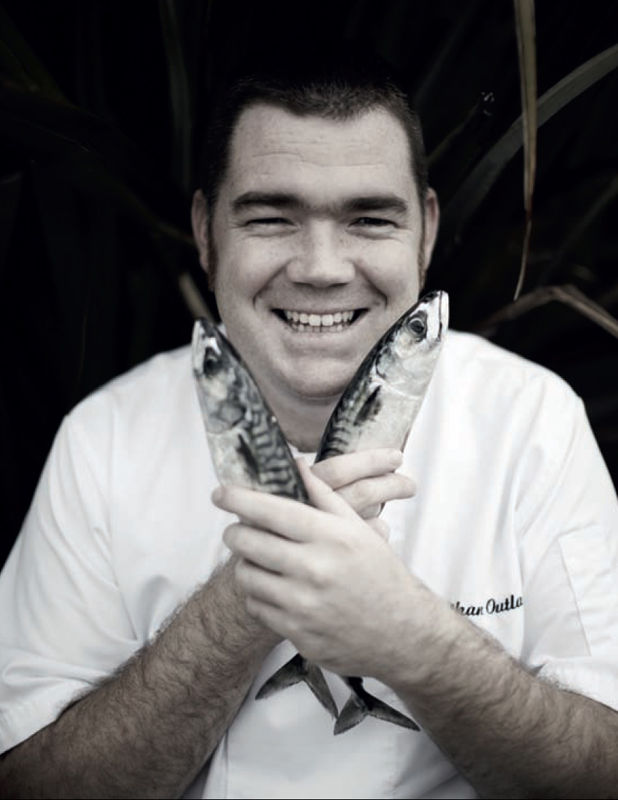To Rachel, my wife and best friend,
for everything you have done to
support my dream, and to my two
beautiful children Jacob and Jessica.
I love you more than anything in the world.
Foreword by Rick Stein

If Nathan Outlaw was the most aggressive and arrogant of chefs I would still have lots of time for him because he loves his fish. For me, almost the best bits of Nathan Outlaws British Seafood are the descriptions of all the Cornish fish and shellfish he uses in the book vivid descriptions of colour, texture and taste, always with a personal observation from his experience of cooking some of the best seafood in the world. But, in fact, Nathan is an utterly charming, self-effacing man who seems somewhat perplexed about the fact that he has two Michelin stars because he says its only simple cooking.
Isnt it amazing how we see ourselves as opposed to the way others see us? To me, yes, the cooking is simple in that he uses mostly local ingredients and easy techniques, but to get there you have to have a wealth of experience. Experience, which Im glad to say, included a long spell in my own kitchen right at the beginning of his career. I remember what a pleasure it was to have this large youth working in my kitchen, who was absolutely unequivocally going to be a chef. His father is a chef and Nathan will always be a chef.
Nathan understood the simple way that I like to cook and he was an enormously valuable asset in my kitchen. So, when he then went off to work in a number of restaurants with much more elaborate cooking, I rather stupidly felt irritated that such a good cook should go off and work in restaurants with a style of cooking that I find hard to take to my heart. But, of course, he had to do that. He had to work out where his own style lay and that must involve trying a whole raft of different cooking approaches. This book means a lot to me, because its quite clear that Nathans come of age and I feel personally proud that he hasnt forgotten some of the things that working for me taught him.
The book is a joy, I love the honesty of it. The recipes are appetising and easy and, above all, do justice to the great seafood which both Nathan and I are lucky enough to have delivered to our restaurants on a daily basis. I also think that in David Loftus he has found the perfect photographer to make his dishes come alive on the page.
British seafood is my passion. I love everything about it: the catching, the prepping, the cooking and the happy faces in my restaurants when people are eating it. Fish and the sea fascinate me to the point of sitting in a daze watching the waves roll in, or searching around rock pools for any crab that might have got stuck behind when the tide has gone out. It can be anything that excites me about cooking and eating seafood from the simplest of grilled fish dishes to the challenge of eating a whole crab, or the complexity of a great seafood stew.
I became interested in cooking when I was very young, inspired by my Mum, who is a great home cook, and my Dad, who is a chef and a very good one at that. Helping out in his kitchens was enough to make me realise that I wanted to be a chef. After my training, and working in London for a couple of years, I moved to Cornwall to work for Rick Stein at his Seafood Restaurant in Padstow. This is where I started to get really excited about seafood. I was handling the freshest and finest fish and shellfish I had ever seen: sea bass still alive in the sink, lobsters that would fight you as you put them in the tank, more varieties of oyster than I ever knew existed I learnt everything about prepping and cooking British seafood and I began to appreciate that the key to great dishes is simplicity. I couldnt wait to have my own restaurant.
I was 25 when The Black Pig opened in Rock in 2003, and I was thrilled when it was awarded a Michelin star 8 months later. I moved to Fowey in 2007 to launch Restaurant Nathan Outlaw, but I knew I would return to Rock one day. Sure enough, in 2010 we relocated to St Enodoc Hotel in Rock, where I cook in my fine dining restaurant, now with two Michelin stars. My more casual family-style Seafood and Grill restaurant is also at the hotel.
I have written this book to convey my style of British seafood cookery. My approach is essentially simple and allows the ingredients and flavours to speak for themselves. I believe that this is the way to cook great seafood dishes. Sustainability is very important to me and, at the time of writing these recipes, all of the fish and shellfish I have used is sustainable, as it should be.
The book is divided into sections, covering each of the fish and shellfish available in the UK that I enjoy to eat and cook. Ive given you information about the individual species, including advice on the best time of the year to eat them. Ive also guided you towards the best cooking techniques to use and shown you how you can mix and match seafood with different sauces, dressings and accompaniments to create your own bespoke dishes. This is very much the way I cook.
For each fish and shellfish, Ive given you two or three recipes. Some are simple and quick, the kind I cook at home. Others are sharing family-style dishes that I make when we have family and friends around for a leisurely lunch or dinner. Ive also included signature dishes from my restaurant, the sort that you might cook for a dinner party. Please dont feel you have to follow any of my recipes to the letter, I just want to encourage you to cook and enjoy seafood. Feel free to chop and change flavouring ingredients, cooking techniques and sauces as you please. I hope youll find plenty to inspire you and that this becomes the first book you grab whenever you buy seafood.
Buying & choosing seafood
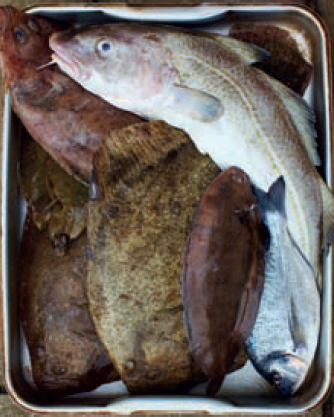
It goes without saying that for any of the recipes you need fresh seafood. The best way of getting this is to build up a relationship with a fishmonger, or the staff at a good fish counter in a local supermarket, or, if youre lucky enough to be living near the coast, with a generous fisherman.
Fish The quality of fresh fish is very much dependent on the way its been transported. You usually find that bad fish comes from poor handling, a long journey or a dodgy fridge along the way
When choosing fish, check that the eyes are bright and clear. Sunken and cloudy eyes indicate that the fish is old. Obviously, have a good sniff! The fish should smell of the sea ozoney and seasidey rather than unpleasant and with a strong fishy smell.
Flat fish should be firm and covered with a healthy sea slime this is natural and a good sign of freshness. With oily fish like herring, mackerel and sardines, its important that the skin colour is vivid and vibrant, almost like petrol on water. And finally, when buying fish that should have scales, make sure they are still in place.
Ideally, you wont be thinking about storing fish, as it is really best eaten within 24 hours of buying. However, if you have to store it, this is what you need to remember. Fish like to be stored between 0 and 2C, covered with a layer of fresh ice. As soon as you get your fish home, wrap it in a damp cloth and put it in the coldest part of your fridge; dont let it sit in water. Stored in the correct manner, most fish will keep on the bone for several days, possibly longer. If you live some distance from your fishmonger, take a cool bag with you to ensure that it makes its way home in good condition.


